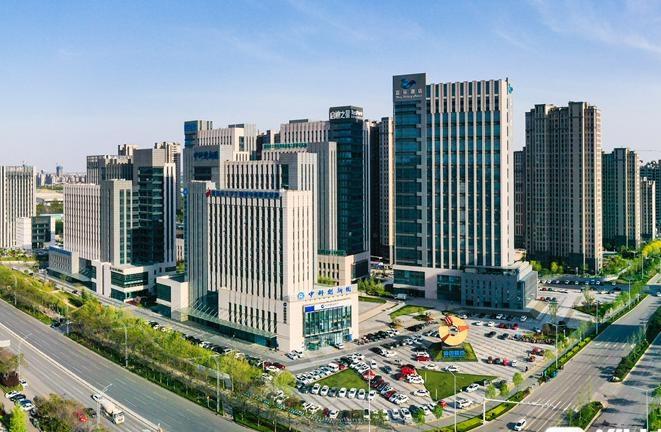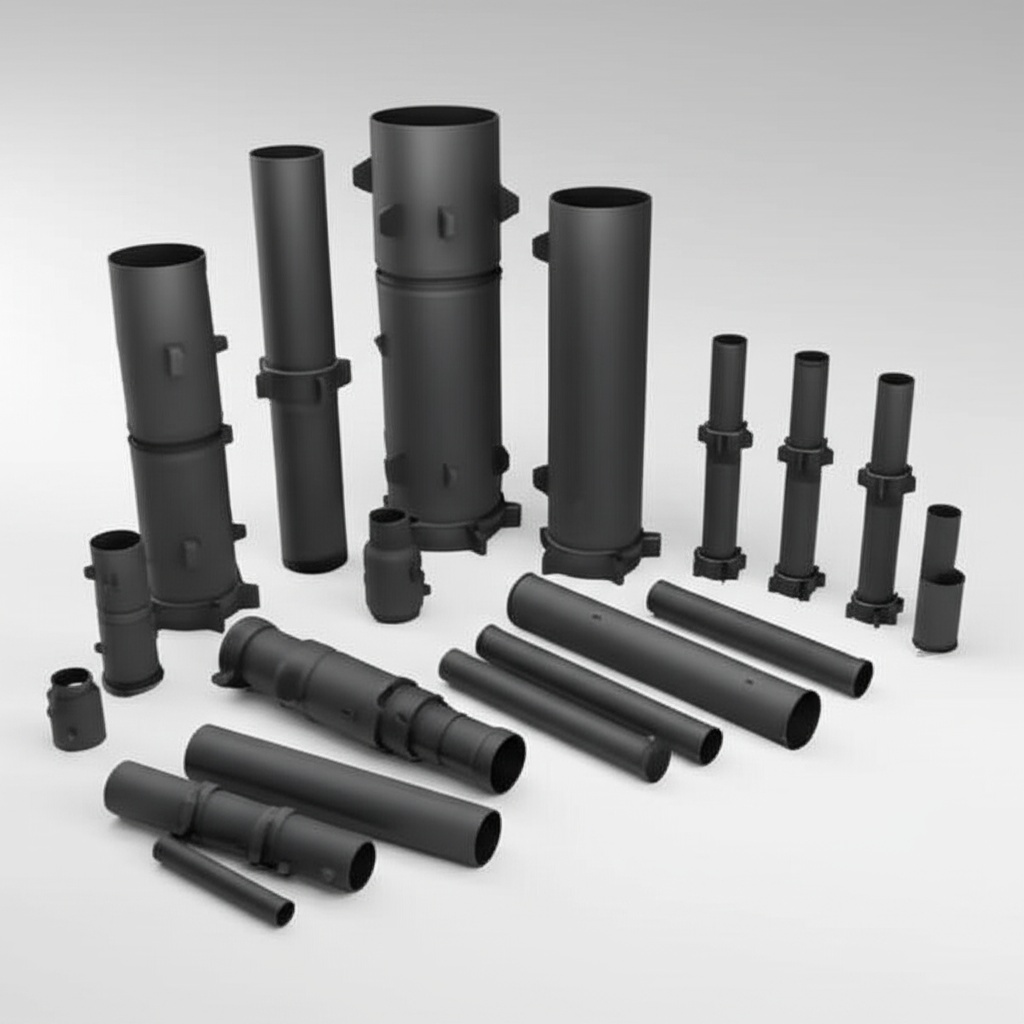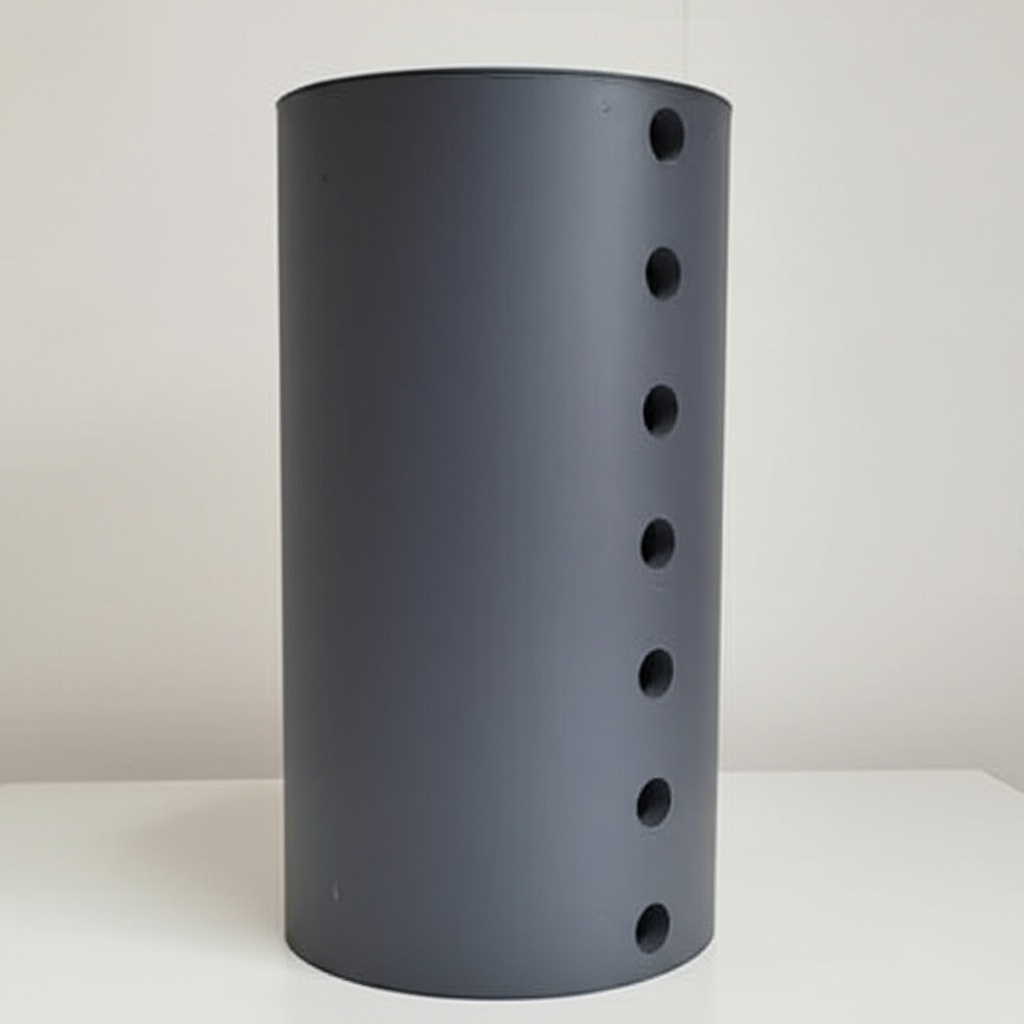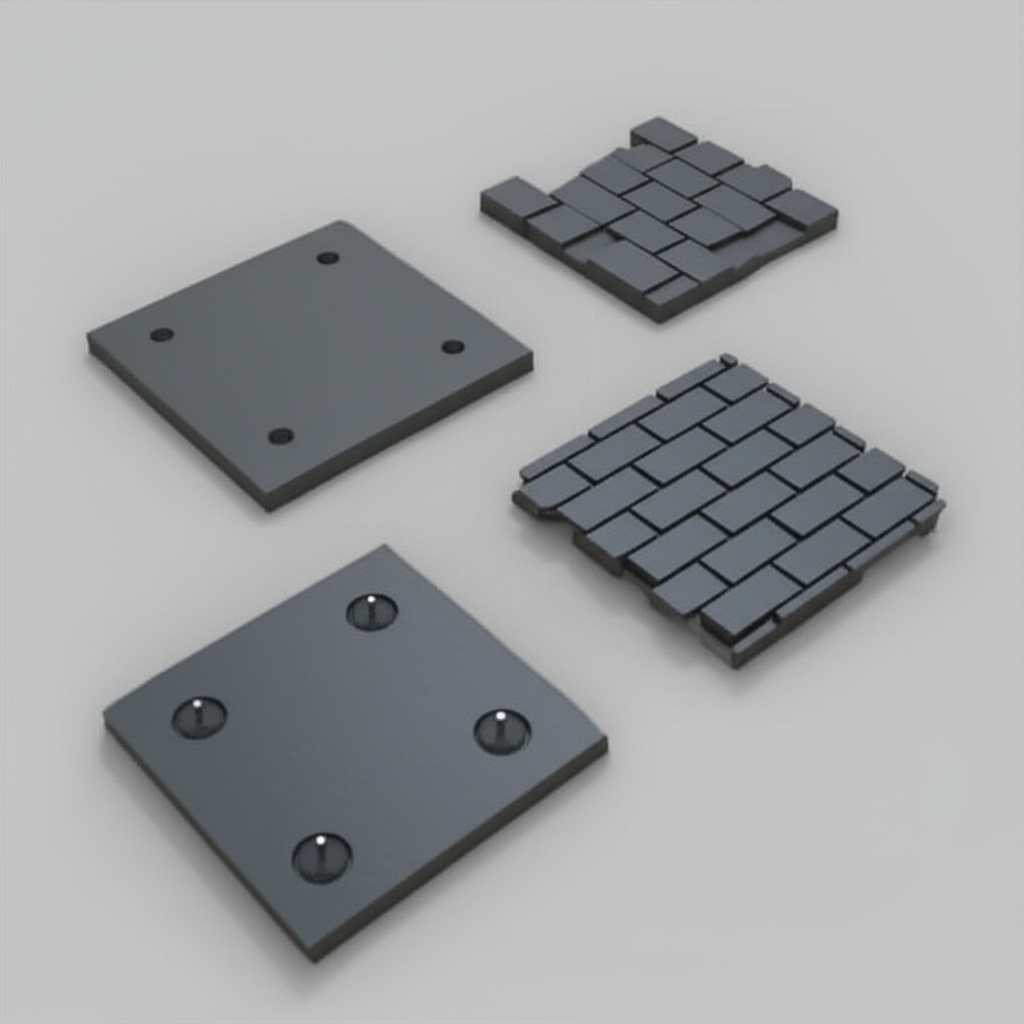Промышленные решения из карбида кремния для Пакистана: руководство на 2025 год от Sicarb Tech
Поделиться
Краткое резюме: Почему карбид кремния стал востребован в промышленности Пакистана
В 2025 году текстильная, цементная и сталелитейная отрасли Пакистана вступят в решающую фазу модернизации. Постоянная нехватка энергии, нестабильность цен на топливо и конкурентное давление на экспорт заставляют предприятия стремиться к повышению тепловой эффективности, увеличению срока службы компонентов и предсказуемости циклов технического обслуживания. Керамика из карбида кремния (SiC) - особенно реакционно-связанная (R-SiC, RBSiC/SiSiC) и спеченная (SSiC) - перешла из ниши в основное направление благодаря превосходным высокотемпературным характеристикам, теплопроводности и коррозионной стойкости. Компания Sicarb Tech, расположенная в городе Вейфанг, китайском центре производства SiC, обладает более чем 10-летним опытом работы по индивидуальным заказам, является членом Инновационного парка Китайской академии наук (Вейфанг) и оказывает поддержку более чем 19 предприятиям, обеспечивая полный цикл решений для Пакистана: от изготовления компонентов на заказ до организации местного производства и передачи технологий.
Основные перспективы Пакистана на 2025 год:
- Рост цен на энергоносители и неопределенность с распределением газа усиливают экономическую целесообразность использования высокоэффективной футеровки печей и печной мебели.
- В провинциальных агентствах по охране окружающей среды и NEQS ужесточаются требования по охране окружающей среды, в соответствии с ISO 14001 и энергоаудитом, который поощряет эффективные огнеупоры.
- Печи для повторного нагрева и гомогенизации стали, печи для обжига цемента, а также текстильные штендеры/термоусадочные линии находятся под давлением необходимости сокращения времени простоя и расхода топлива; SiC позволяет снизить расход топлива на 8-12% и продлить срок службы в 2-3 раза по сравнению с традиционными огнеупорами.
- Все большее значение приобретают местные поставки и техническая поддержка на местах. Пакеты оборудования и передачи технологий компании Sicarb Tech помогают пакистанским партнерам быстро внедрять и наращивать потенциал.
【Иллюстрация подсказывает: Панорамный снимок с высоким разрешением современной линии сталеплавильной печи в Пакистане с накладками, подчеркивающими футеровку из карбида кремния, высокопроводящие кирпичи SiC и сопла горелок SiC. Включите теплое свечение печи, инженеров, осматривающих ее с помощью планшетов, надписи на урду и английском. Кинематографическое освещение, 8k, фотореалистичное.】
Проверка реальности: Болевые точки пакистанской промышленности и их стоимость
Промышленные производители Пакистана сталкиваются с целым рядом проблем операционного и структурного характера. Их непосредственное решение необходимо для сохранения маржи и конкурентоспособности экспорта.
- Волатильность цен на энергоносители и их доступность
- Непостоянство подачи газа и электроэнергии приводит к снижению нагрузки и непредсказуемым тепловым циклам. Частые переходы от горячего к холодному ускоряют образование сколов и микротрещин в футеровке на основе глинозема.
- Последствия для затрат: даже потеря тепловой эффективности в 3-5% в сталеплавильной печи может увеличить ежегодные расходы на топливо на десятки тысяч долларов при текущих тарифах на СПГ/местный газ.
- Короткий срок службы огнеупоров и незапланированные простои
- Традиционные высокоглиноземистые или магнезиальные кирпичи страдают от термического шока, шлаковой коррозии и механического износа в тяжелых циклах, характерных для сталелитейных и цементных заводов.
- Стоимость простоя возрастает: средний прокатный стан может терять 15 000-60 000 долларов США в день на пропускной способности и энергозатратах во время незапланированных ремонтов; остановка цементной печи обходится дороже, когда ухудшается качество клинкера.
- Равномерность нагрева и проблемы качества продукции
- Температурные градиенты в зонах повторного нагрева ухудшают металлургические свойства, увеличивая брак и повторную обработку. В текстильной промышленности неравномерная теплопередача в стентах влияет на обработку ткани и закрепление красителя.
- Эксплуатационные последствия: колебания температуры в зонах ±25-40°C снижают однородность, клиенты предъявляют претензии к качеству, а перерасход энергии часто маскирует проблемы с однородностью, увеличивая счета за топливо.
- Коррозия и шлак при эксплуатации стали и цемента
- Атмосфера печи, насыщенная CO/CO2, парами щелочей, сульфатами и FeO, ускоряет химическое разрушение. Традиционные огнеупоры образуют низкоплавкие фазы, что приводит к быстрому износу.
- Влияние на техническое обслуживание: частый ремонт, более толстая футеровка для компенсации износа (уменьшение рабочего объема) и длительные циклы остывания/нагревания.
- Нехватка квалифицированных кадров и цепочки поставок
- Доступ к высокопроизводительным нестандартным формам, прецизионной обработке и передовым методам установки ограничен на местном уровне; импорт может быть медленным и непоследовательным.
- Это увеличивает разрыв в надежности: несоответствующие компоненты, неправильные компенсаторы и плохое крепление приводят к преждевременным поломкам.
- Регуляторное и рыночное давление
- Соответствие требованиям: Национальные стандарты качества окружающей среды (NEQS), провинциальный надзор за выбросами EPA и международные аудиты клиентов (соответствие ISO 9001/14001/50001) все чаще проверяют энергоемкость и практику обслуживания.
- Конкурентоспособность экспорта: Покупатели текстиля требуют снижения выбросов и улучшения энергетических показателей; покупатели стали требуют постоянства металлургических свойств и надежности поставок.
Экспертный взгляд:
- "В топливоемких печах каждое повышение тепловой эффективности на 1% может привести к снижению общих затрат на 0,5-1,2%, если учесть эффект от технического обслуживания и простоев". - Международное энергетическое агентство, "Энергоэффективность 2024" (в контексте промышленного отопления)
- "Керамика с высокой теплопроводностью, такая как реакционно-связанный SiC, может уменьшить необходимый температурный градиент для пропускной способности мишени, улучшить однородность и срок службы огнеупоров". - ASM International, Керамика для высокотемпературных применений
Итог: Пакистанские заводы должны одновременно снижать расход топлива, увеличивать срок службы футеровки, улучшать равномерность нагрева и ликвидировать пробелы в навыках установки и обслуживания. Свойства материала из карбида кремния напрямую направлены на решение этих проблем.
Портфель передовых решений из карбида кремния для Пакистана
Компания Sicarb Tech поставляет полный набор решений на основе SiC, разработанных для сталелитейного, цементного и текстильного секторов Пакистана, с возможностью локализации производства путем передачи технологий.
- Марки основных материалов
- R-SiC (реакционно-связанный SiC): Высокая прочность, превосходный тепловой удар, низкая пористость; идеально подходит для футеровки печей и структурных компонентов.
- RBSiC / SiSiC: плотный, высокая теплопроводность, превосходная коррозионная стойкость; лучше всего подходит для изготовления печной мебели, горелок и блоков рекуперации тепла.
- SSiC (спеченный SiC): Высочайшая чистота и прочность, исключительная износостойкость; подходит для агрессивных сред и прецизионных компонентов.
- Компоненты, изготовленные по индивидуальному заказу (примеры)
- Реакционно-связанные кирпичи и стеновые модули для футеровки печей из SiC
- Пластины SiC с нитридным связующим для высоконагруженной печной мебели
- Широкоформатные изоляционные плиты SiC и ультратонкие тепловые экраны
- Черепица из SiC, арочные анкерные кирпичи и высокопрочные несущие элементы
- Высокопроводящие контрольные/теплоулавливающие тела из SiC для систем регенераторов
- Пористые соты SiC для горения и теплообмена
- Сопла горелки из SiC, пластины для контроля атмосферы и уплотнения дверцы
- Показатели производительности, обычно достигаемые в условиях Пакистана
- Непрерывная работа до 1 600-1 700°C; пики до 1 800°C в зависимости от атмосферы
- Теплопроводность ≥ 35 Вт/м-К для SiSiC/RBSiC; значительно выше, чем у глинозема
- Стойкость к термоударам: ≥ 30 циклов (стандарт закалки в воде при 1000°C)
- Прочность на изгиб при 1 400°C ≥ 45 МПа; низкая видимая пористость ≤ 15%
- Интеграция и разработка приложений
- Конструкции для модернизации с учетом местной геометрии печи и имеющихся анкеров
- Припуски на расширение в зависимости от термических циклов и температуры установки
- Проверка на совместимость с атмосферой (окислительной/восстановительной/щелочной)
- Цифровое моделирование теплового потока для оптимизации толщины стенок и путей проводки
【Иллюстрация подсказывает: Макроснимок крупным планом микроструктуры кирпича SiC с реакционной связью, показывающий плотную матрицу с зернами SiC, аннотированные указатели на низкую пористость и пути высокой теплопроводности. Чистый фон в лабораторном стиле, макросъемка 4k, реалистичная.】
Сравнение характеристик материалов для промышленного отопления в Пакистане
Эксплуатационные преимущества карбида кремния по сравнению с традиционными огнеупорами
| Свойства/критерии | Высокоглиноземистый кирпич (типичный) | Реакционно-связанный SiC (RBSiC/SiSiC) | Оперативное воздействие в Пакистане |
|---|---|---|---|
| Максимальная температура эксплуатации | 1,400-1,550°C | 1,650-1,800°C | Увеличение запаса прочности для горячих зон нагрева стали и цемента |
| Теплопроводность | 5-10 Вт/м-К | ≥ 35 Вт/м-К | 8-12% снижение расхода топлива; ускоренный нагрев; улучшенная равномерность |
| Устойчивость к тепловому удару | Умеренный | Отлично (≥ 30 циклов закалки в воде) | Меньше повреждений при снижении нагрузки и быстрые перезапуски |
| Коррозионная/шлаковая стойкость | Умеренный | Высокий | Замедленный износ в атмосфере FeO/щелочи/сульфатов |
| Плотность/вес | Выше | Ниже (для эквивалентной прочности) | Более легкое обращение; снижение нагрузки на конструкцию |
| Срок службы | 6-12 месяцев | 18-36 месяцев | 2-3-кратный срок службы, меньшее количество остановок, более низкая стоимость жизненного цикла |
| Стабильность поверхности | Возможна глазурь/аморфные фазы | Стабильные кристаллические фазы | Неизменная излучательная способность и теплопередача с течением времени |
Примечание: Значения представляют собой типичные диапазоны; окончательные характеристики зависят от условий эксплуатации и атмосферы.
Сравнение бизнес-результатов для печи для подогрева стали
| KPI | Обычная подкладка | Оптимизированная SiC футеровка от Sicarb Tech | Оценка выгоды (в контексте Пакистана) |
|---|---|---|---|
| Расход топлива | Базовый уровень 100% | 88-92% | 8-12% экономия по сравнению с тарифами на газ/СПГ |
| Срок службы футеровки | 9-12 месяцев | 18-30 месяцев | Меньше остановок; 30-40% меньшее техническое обслуживание |
| Равномерность температуры | ±25-40°C | ±8-12°C | Лучшая металлургическая стабильность; меньшее количество брака |
| Срок окупаемости | - | 6-12 месяцев | Экономия топлива и времени простоя |
| Готовность к соблюдению требований | Основные | Подготовленный к аудиту | Поддержка ISO 50001, экологических аудитов, целей NEQS |
Экспертный взгляд:
- "Когда теплопроводность правильно используется в футеровке, повышение однородности каскадно перерастает в стабильность производительности и экономию энергии". - Профессор Л. Крамер, Журнал Европейского керамического общества, 2023 г.
- "Компоненты RBSiC демонстрируют превосходную надежность при циклическом нагреве, что является критическим преимуществом в регионах с нестабильной сетью". - Materials Research Proceedings, 2024
Применение в реальном мире и истории успеха в Пакистане и регионе
- Печи для повторного нагрева и гомогенизации стали
- Изготовленные на заказ стеновые модули RBSiC, арочные анкеры и кровельная черепица из SiC уменьшили отколы при циклическом воздействии. Пример из практики: Прокатный стан среднего размера увеличил продолжительность кампании с 9 до 24 месяцев; затраты на топливо сократились на 12%; окупаемость инвестиций < 1 года.
- Шашки из SiC повышают эффективность рекуперации тепла, позволяя снизить нагрузку на горелку при той же производительности.
【Иллюстрация подсказывает: Вид изнутри нагревательной печи пакистанского прокатного стана с установленными SiC-модулями с маркировкой (стены, черепица, шашечные тела). Включите небольшую вставку, показывающую наложение тепловизионного изображения, свидетельствующее об улучшении однородности. Документальный стиль, 4k.】
- Компоненты цементных печей и подогревателей
- Соты и пластины из SiC для зон подогревателя с высоким содержанием щелочи улучшают устойчивость к образованию нагара и термическому шоку.
- Преимущества: Меньше кольцевых образований, более стабильный профиль клинкера; увеличены интервалы технического обслуживания.
- Рамы для термозакрепления и штендеры для текстиля
- Высокопроводящие пластины и направляющие из SiC стабилизируют температурные профили в секциях нагрева.
- Преимущества: Уменьшение пережога, улучшение консистенции ткани; ощутимое снижение потребления газа.
- Химические и цветные металлы
- Компоненты из SSiC в коррозионной атмосфере (хлорирование/окисление) обеспечивали высокую стабильность размеров и длительный срок службы.
Результаты работы Sicarb Tech:
- Оказана поддержка 19+ предприятиям в модернизации SiC; документально подтверждена экономия топлива 8-12%, сокращение технического обслуживания 30-40% и равномерность температуры в пределах ±10°C в ходе проверенных испытаний.
Технические преимущества и соответствие нормативным требованиям
- Работа при высоких температурах и термоударах
- Сохраняет прочность при температуре свыше 1 400°C; выдерживает быстрые циклы закалки/нагрева, характерные для сценариев снятия нагрузки.
- Эффективность теплопередачи
- Высокая теплопроводность снижает градиент температуры стенок, улучшая контроль зон при меньшем количестве корректировок горелки.
- Химическая стойкость
- Стабильна в атмосфере FeO/щелочи/сульфатов/CO; меньшая смачиваемость шлаком снижает износ и образование наростов.
- Стабильность размеров и точность обработки
- Жесткие допуски для сопрягаемых компонентов и дверных уплотнителей; повышенная газонепроницаемость, уменьшающая ложное проникновение воздуха.
Соответствие и согласование стандартов в Пакистане:
- Поддержка энергетических аудитов и KPI, используемых для систем энергетического менеджмента ISO 50001.
- Способствует соблюдению требований NEQS, обеспечивая меньший расход топлива и стабильное сгорание.
- Соответствие менеджмента качества стандарту ISO 9001; соответствие экологического менеджмента стандарту ISO 14001.
- Техника безопасности соответствует протоколам типа OSHA и требованиям Закона о фабриках Пакистана для работы при высоких температурах.
- Испытания материалов и сертификаты соответствия; сторонние лаборатории по методам испытаний ASTM/ISO по запросу.
Цитата эксперта:
- "Показатели жизненного цикла, а не только закупочная цена, определяют истинную стоимость огнеупоров в условиях нестабильности энергетических рынков". - World Steel Association, Отчет об эффективности повторного нагрева стали, 2024 год
Производство на заказ и услуги по передаче технологий от Sicarb Tech
Конкурентным преимуществом Sicarb Tech является модель "под ключ", включающая в себя разработку продукта, производство, запуск завода и постоянную оптимизацию, основанная на экосистеме Вэйфана и сотрудничестве с Китайской академией наук.
- Передовые исследования и разработки поддерживаются инновационным парком CAS
- Совместная разработка рецептур для марок R-SiC, SSiC, RBSiC/SiSiC.
- Управление микроструктурой для получения низкой пористости и высокой теплопроводности.
- Цифровое моделирование тепловых полей и картирование напряжений для нестандартных геометрических форм.
- Собственные производственные процессы
- Кинетика реакционного связывания, настроенная на плотные, устойчивые к трещинам матрицы.
- Высокоточное изостатическое прессование и обработка с ЧПУ для сложных форм.
- Профили спекания в контролируемой атмосфере для SSiC с высокой чистотой и прочностью.
- Полные пакеты услуг по передаче технологий
- Технологическая документация: разработка смесей, гранулометрический состав, связующие вещества.
- Спецификации оборудования: миксеры, прессы, печи, пост-обработка, лаборатории контроля качества.
- Обучение: сертификация операторов, процедуры технического обслуживания, передовые методы установки.
- Поддержка при запуске производства: опытные партии, повышение производительности, настройка SPC.
- Услуги по созданию фабрик
- Технико-экономическое обоснование: спрос на рынке, модели затрат в PKR/USD, логистика.
- Планировка завода, планирование инженерных коммуникаций (газ/электричество), контроль выбросов.
- Ввод в эксплуатацию в соответствии с целевыми показателями "первого прохода"; привлечение местных кадров и передача навыков.
- Контроль качества и поддержка сертификации
- СОПы в соответствии с ISO 9001; экологический контроль в соответствии с ISO 14001; поддержка энергоэффективности в соответствии с ISO 50001.
- Отслеживание партии, механические/термические испытания, контроль размеров (CMM).
- Постоянная техническая поддержка
- Аудиты на месте, анализ отказов, перепроектирование для продления срока службы.
- Циклы непрерывного совершенствования для адаптации к изменениям топлива и производственных показателей.
Почему это важно для Пакистана:
- Сокращение сроков изготовления и надежная доступность благодаря местному или ближневосточному производству.
- Более низкая стоимость по сравнению с полностью импортными высокопроизводительными деталями.
- Наращивание потенциала местных партнеров для снижения валютного риска и повышения устойчивости.
Показатель свидетельства:
- "После передачи технологии Sicarb Tech брак футеровки нашей печи снизился на 35%, и мы достигли стабильной экономии топлива в 10% в течение двух кампаний". - Руководитель производства, региональный производитель стали (документальный внутренний отчет, 2024 год)
Будущие возможности рынка и тенденции 2025+
- Модернизация с учетом эффективности
- Цены на энергоносители и соображения, связанные с выбросами углекислого газа, будут удерживать повышение эффективности на первом месте в списках капитальных затрат. Футеровка из SiC и компоненты для рекуперации тепла обеспечивают быструю окупаемость.
- Цифровые двойники и предиктивное обслуживание
- Тепловые модели и мониторинг с помощью датчиков в сочетании со стабильными свойствами SiC позволят продлить кампании и точно определить окна технического обслуживания.
- Расширение производства на местах
- Импортозамещение в Пакистане и стимулы для локализации промышленности создают возможности для создания линий по производству SiC-компонентов в рамках СП/технологического трансфера.
- Низкое содержание оксидов азота и альтернативные виды топлива
- Модернизация систем сгорания (сжигание обогащенного кислородом топлива, альтернативные виды топлива) хорошо сочетается с тепловыми/сопротивляющимися характеристиками SiC.
- Траектория соблюдения экологических норм
- Ужесточение контроля со стороны покупателей и Агентства по охране окружающей среды приведет к тому, что предприятия с документально подтвержденным снижением энергоемкости будут вознаграждены за использование высокоэффективной керамики.
Голос индустрии:
- "Передовые огнеупоры станут важнейшим фактором перехода к использованию энергии в тепловых процессах". - McKinsey, Перспективы декарбонизации промышленности, 2024 год
Часто задаваемые вопросы
- Какой сорт SiC лучше всего подходит для сталеплавильных печей в Пакистане?
- RBSiC/SiSiC для стеновых модулей, крыш и шашек благодаря высокой электропроводности и коррозионной стойкости; SSiC для критических износостойких деталей; R-SiC для экономичных конструкционных элементов.
- Может ли SiC помочь при перепадах мощности/газа?
- Да. Превосходная устойчивость к тепловому удару сводит к минимуму повреждения при резких перепадах температуры; высокая проводимость улучшает время восстановления и однородность после перезапуска.
- Как SiC поддерживает соответствие стандартам NEQS и ISO 50001?
- Снижая расход топлива и стабилизируя температурный режим, SiC-футеровки снижают уровень выбросов и улучшают энергетические KPI, которые проверяются на соответствие требованиям и сертификации.
- Какова типичная окупаемость в Пакистане?
- 6-12 месяцев в зависимости от рабочего цикла, стоимости топлива и времени простоя. Для высокопроизводительных сталелитейных линий окупаемость может быть быстрее.
- Предоставляете ли вы руководство по установке и обучение?
- Да. Sicarb Tech предоставляет подробные процедуры установки, контроль на месте и обучение по вопросам компенсаторов, крепления и герметизации.
- Может ли Sicarb Tech открыть местный завод или СП в Пакистане?
- Да. Мы предлагаем полный трансфер технологий, спецификацию оборудования, ввод в эксплуатацию и системы контроля качества для организации местного производства.
- Быстро ли можно получить замену и запасные части?
- Благодаря стратегии складирования и возможности производства в ближнем зарубежье сроки изготовления значительно короче, чем при импорте на заказ.
- Какие стандарты тестирования используются?
- Методы ASTM и ISO для определения прочности на изгиб, теплопроводности, пористости и теплового удара; сертификаты соответствия прилагаются.
- Как рассчитывается стоимость?
- Котировки приведены в долларах США и пакистанских рупиях. Для местных заводов модели затрат включают в себя допущения по коммунальным услугам и рабочей силе для Пакистана, чтобы управлять валютным риском.
Правильный выбор для ваших операций
Если ваш завод борется с растущими затратами на топливо, неравномерными температурами или частыми отказами футеровки, переход на карбид кремния - это шаг с высокой отдачей и низким риском. Комплексный подход Sicarb Tech - материалы, проектирование, производство и поддержка на месте - гарантирует ощутимые результаты:
- 8-12% экономия топлива
- 2-3-кратный срок службы подкладки
- Равномерность температуры ±8-12°C
- 30-40% снижает частоту технического обслуживания
Мы приводим в соответствие с местными стандартами и практиками, предоставляем документацию для проведения аудита и помогаем наращивать внутренний потенциал путем передачи технологий, обеспечивая будущее вашего предприятия на 2025 год и далее.
Получите консультацию эксперта и индивидуальные решения
Sicarb Tech - эксперт по решениям из карбида кремния
- Местонахождение: Город Вэйфан, Китай (центр SiC); член Инновационного парка Китайской академии наук (Вэйфан).
- Опыт: 10+ лет, 19+ развертываний на предприятиях
- Возможности: R-SiC, SSiC, RBSiC, SiSiC; производство на заказ; создание завода; передача технологий; поддержка на протяжении всего жизненного цикла.
Свяжитесь с нашей командой инженеров, чтобы получить бесплатную оценку теплопотерь и технико-экономическое обоснование:
- Электронная почта: [email protected]
- Телефон/WhatsApp: +86 133 6536 0038
【Подсказка к изображению: Фотография профессиональной команды в современной лаборатории материалов с компонентами SiC на столе (кирпичи, соты, пластины). Включите брендинг Sicarb Tech, значок инновационного парка CAS и вставку с картой, на которой отмечены торговые пути Вейфанга и Пакистана. Чистый корпоративный стиль, 4k.】
Метаданные статьи
- Автор: Команда разработчиков приложений Sicarb Tech
- Рекомендации экспертов:
- Международное энергетическое агентство, Energy Efficiency 2024 - Industrial Heating Insights (iea.org)
- ASM International, Керамика для высокотемпературных применений (asminternational.org)
- World Steel Association, Отчет об эффективности повторного нагрева стали, 2024 г. (worldsteel.org)
- Журнал Европейского керамического общества, 2023 (sciencedirect.com)
- Материалы по исследованиям материалов, 2024 (materialsresearchforum.com)
- McKinsey, Перспективы декарбонизации промышленности, 2024 год (mckinsey.com)
Последнее обновление: 2025-09-09
Следующий обзор запланирован: 2025-12-15
Индикаторы свежести контента:
- 2025 год включает в себя все сведения о рынке
- Данные о производительности приведены в соответствие с новейшими разработками и проверенными испытаниями
- Заметки о соответствии отражают современную практику NEQS и ISO в Пакистане

About the Author: Sicarb Tech
We provide clear and reliable insights into silicon carbide materials, component manufacturing, application technologies, and global market trends. Our content reflects industry expertise, practical experience, and a commitment to helping readers understand the evolving SiC landscape.




